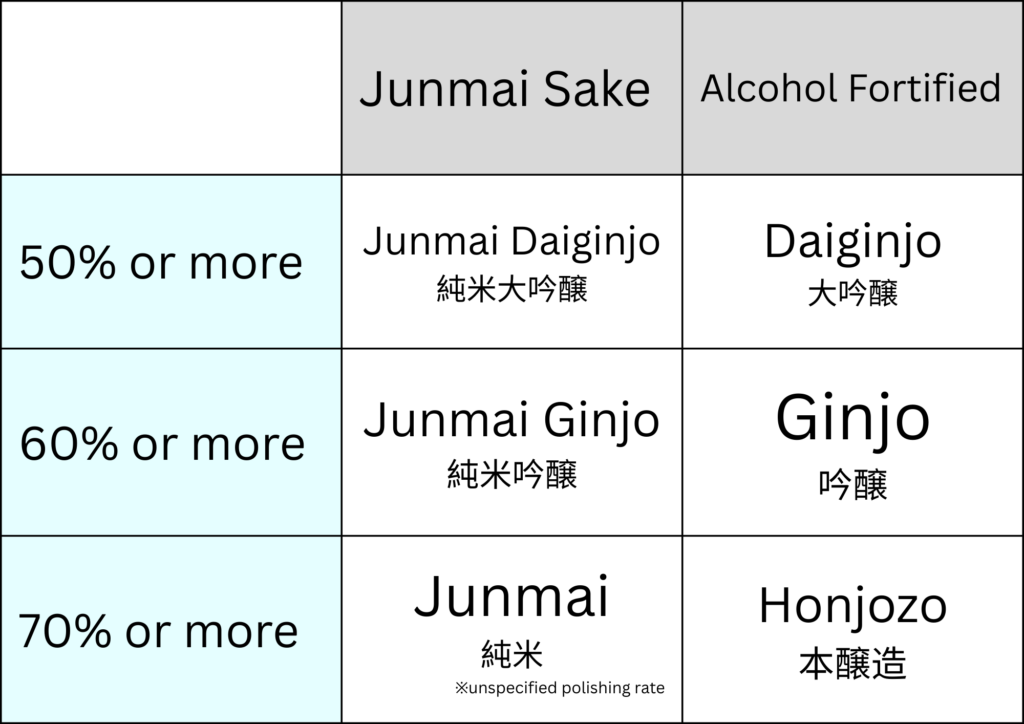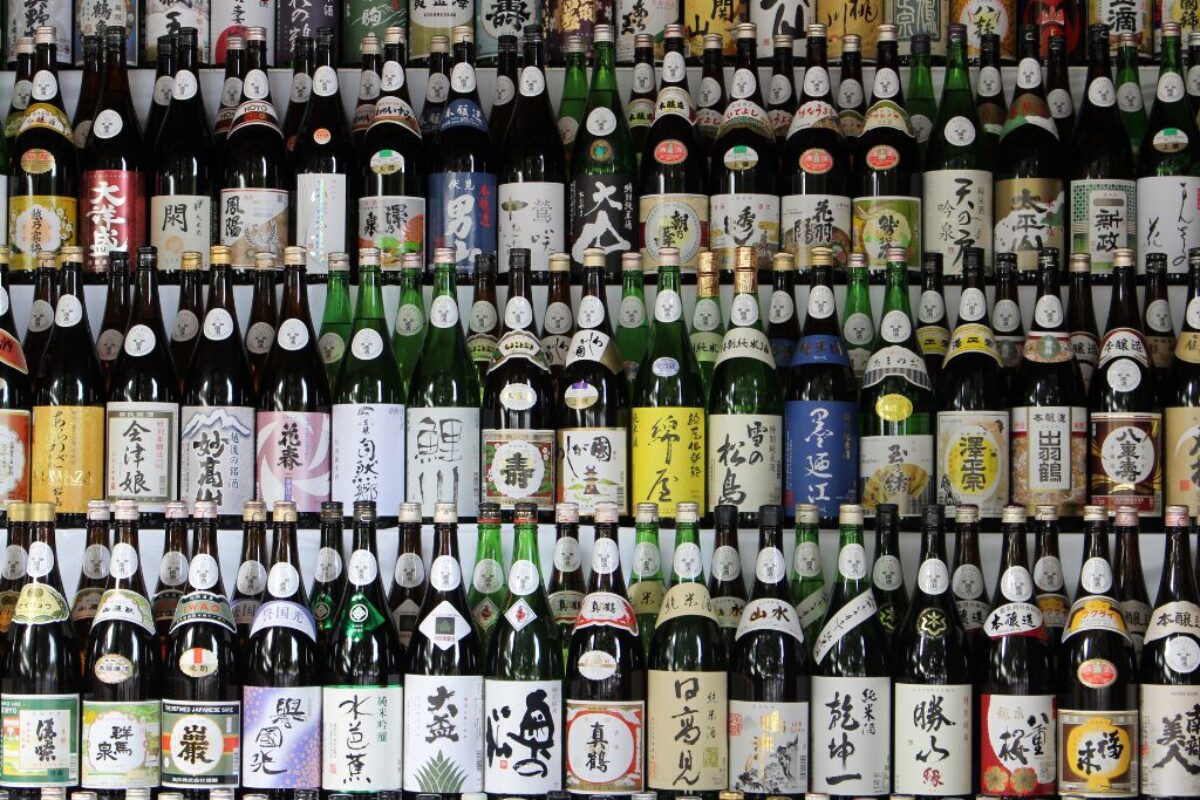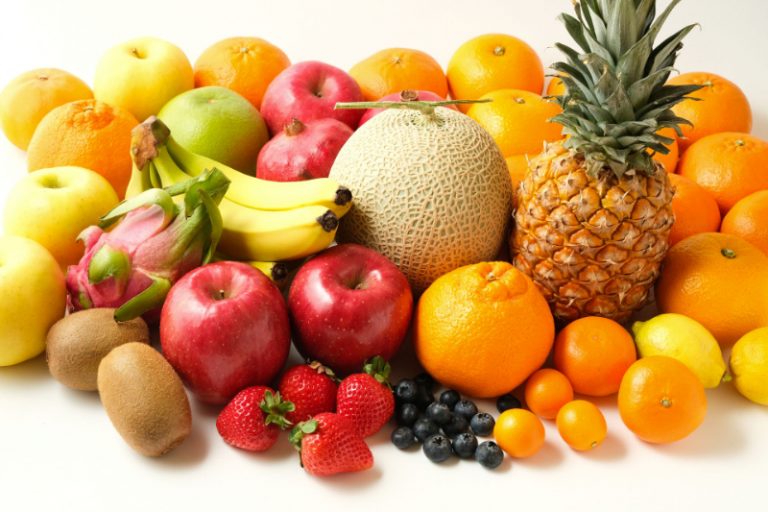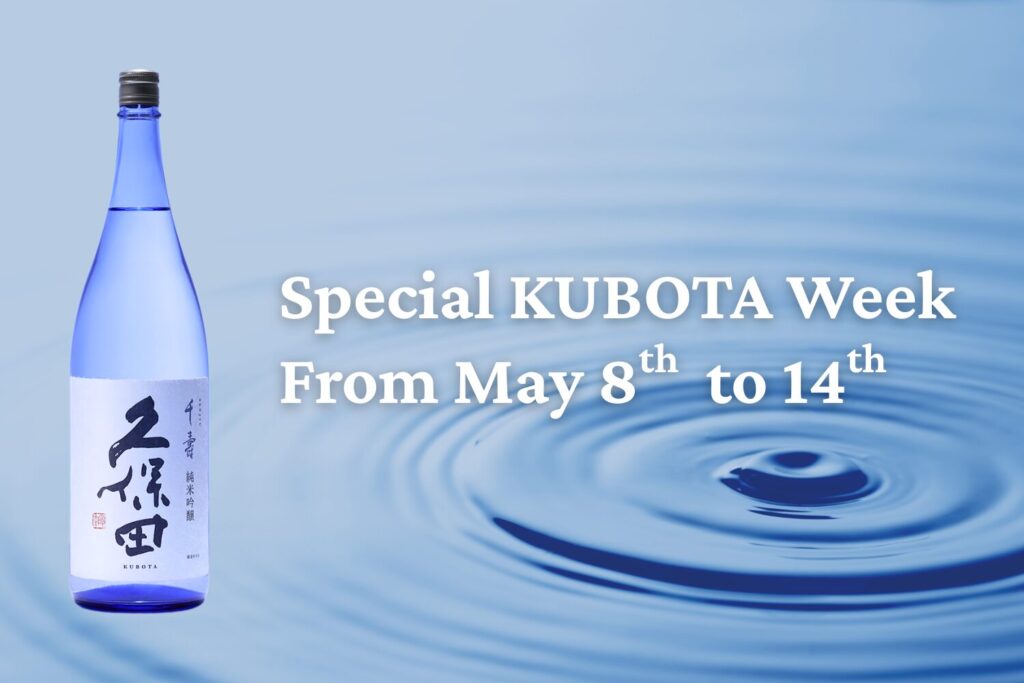Explore the world of Japanese sake, where tradition meets precision in brewing. This post will guide you through the classifications of sake, explaining the imoportance of rice polishing and the unique characteristics of each sake class.
The importance of Rice Polishing in Sake Production

Rice Polishing Rate of Japanese Sake
In sake brewing, the rice polishing rate is a fundamental measure that greatly influences the final taste and quality of sake. The polishing rate refers to the percentage of the original grain that is removed during the milling process. Sakes with higher polishing rates (more of the grain removed) are generally lighter, with a more refined flavour, as the unwanted proteins and substance in the outer layers of the rice are eliminated.
Sake Rice vs. Regular Table Rice: Cultivating the Perfect Grain
Sake rice, known as “shuzo kotekimai,” is different from the ordinary rice. It is specifically cultivated for sake production, characterized by larger grains with a higher starch content centered in the grain called “shinpaku”, which is ideal for fermentation. This rice also has less protein and lipid content compared to regular rice, which helps in brewing a clearer sake.
Why Sake Rice Needs to Be Polished
The purpose of polishing rice is to remove the outer layers of the grain that contain proteins, fats, and minerals, which can introduce undesirable flavors during fermentation. The more the rice is polished, the purer the starches become, allowing for a cleaner fermentation process and a more refined sake.
How Rice is Polished for Sake
Rice polishing is a delicate process where the grains are slowly milled to avoid generating heat, which can crack the grain and affect fermentation. This process can take from several hours to several days depending on the desired polishing rate. High-grade sakes often require extensive milling to achieve polishing rates of 50% or lower and take 2 to 3 days finishing milling.

Detailed Analysis of Sake Classes

Junmai sake, made solely from rice, water, koji mold, and yeast. It offers a pure, robust flavor with a rich body and no added alcohol. On the other hand, alcohol-fortified sake includes distilled alcohol to enhance aroma and taste, resulting in a lighter, smoother drink that’s easier to enjoy and preserves better, making it suitable for those who prefer a more fragrant and less intense sake experience.

Classification by “Junmai” (Pure Rice Sake)
Junmai Daiginjo(純米大吟醸)
This premium class requires rice to be polished to at least 50%, sometimes even lower. It is known for its delicate, complex flavours and aromatic profile. Imagine a silky smooth texture that melts on the tongue, offering a luxurious drinking experience.

Junmai Ginjo(純米吟醸)
With rice polished to at least 60%, Junmai Ginjo is slightly less refined than Daiginjo but still offers a rich array of flavours and a smooth finish. It brings elegant floral or fruity notes with a silky texture, but may present slightly more standingout flavours than Daiginjo.
Tokubetsu Junmai(特別純米)
Meaning “special pure rice sake,” this category often involves rice polished to around 60%, but the designation can also refer to the use of a special rice type or brewing method.

Junmai(純米)
The most traditional form, with no added distilled alcohol and unspecified polishing rate, focusing on highlighting the natural flavours and characteristics of the rice. Junmai sake is a great introduction to the world of sake and pairs well with a variety of foods
Classification by “Alten” (Alcohol Fortified)
Daiginjo(大吟醸)
Like Junmai Daiginjo, 50% or more polishing rate, but with a small amount of distilled brewer’s alcohol added, which can help extract aroma and flavour, making it more fragrant and accessible. This allows to adjust the overall balance of the sake, sometimes adding a subtle sweetness or a touch of complexity.

Ginjo(吟醸)
This class also involves a minimum 60% polishing rate, with a bit of added alcohol to enhance its aromatic qualities.
Honjozo(本醸造)
With at least 70% of the grain polished away and a small addition of brewer’s alcohol. This category offers the broadest range of flavour profiles depending on the brewer’s choices. Honjozo sakes can be light and crisp or richer and more complex.

Embracing the Diversity of Sake
Understanding these categories not only enhances your sake experience, but also provides insight into the deep cultural and technical craftsmanship of Japanese sake production. Each type of sake offers a unique taste experience, from the aromatic complexity of Daiginjo to the robust, more full-bodied flavour of Junmai. When paired correctly with food, the character of each sake can elevate any meal, providing a harmonious blend of flavours.









